Go through these tips to ensure your Apple Watch stays safe from liquid damage after you have submerged it in water or showered with it.
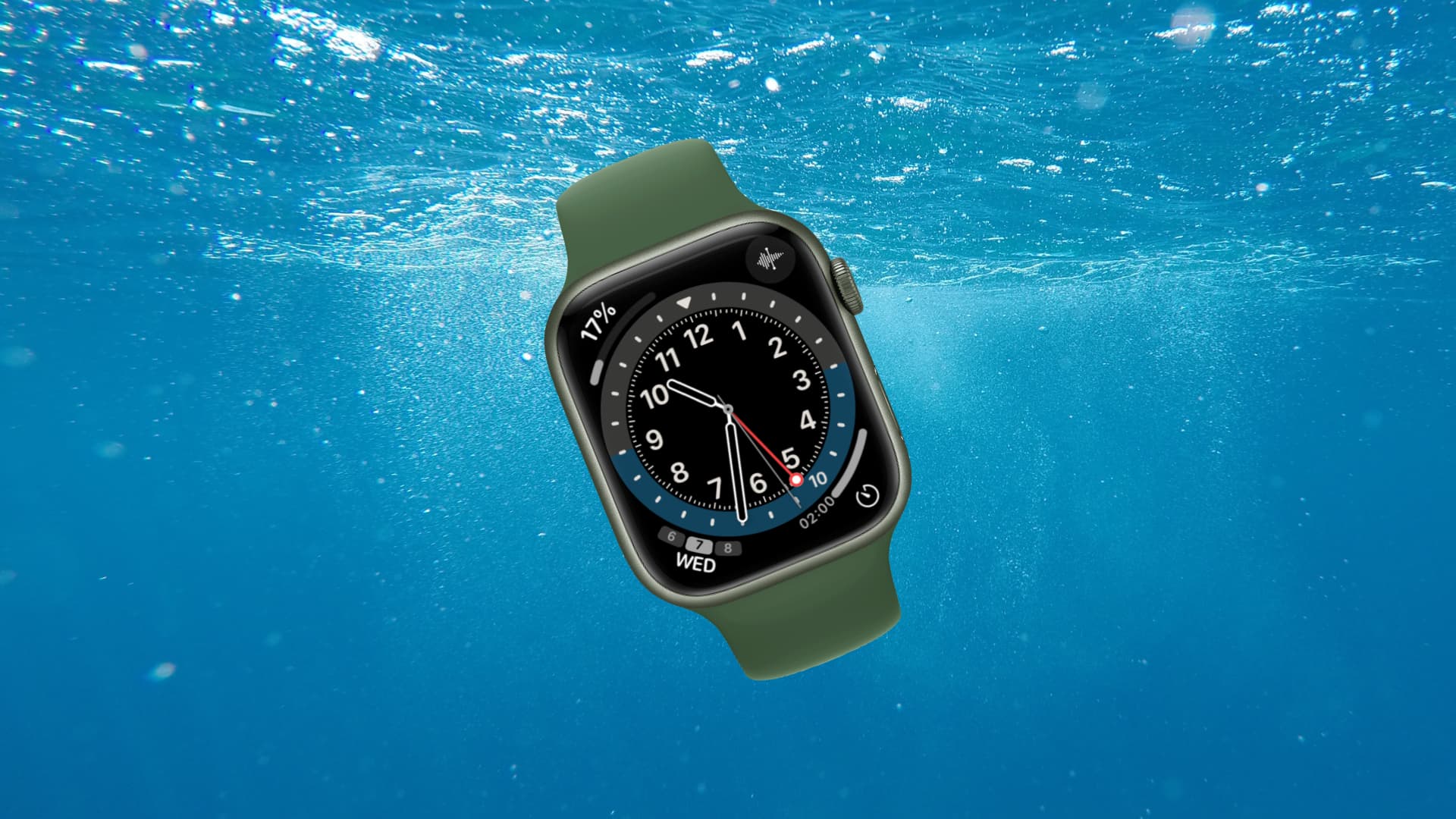
Your Apple Watch should be fine even if you drop it in water, swim with it, shower with it, or get it wet while washing your hands and doing other water activities.
But still, here are a few things to do and some information related to your Apple Watch’s water resistance capability.
Apple Watch water resistance
All Apple Watch models have some level of water resistance.
Apple Watch 1st generation (standard, Sport, Edition) and Apple Watch Series 1 are splash and water-resistant, with an IP rating of IPX7. They can be used during light rain, washing hands, exercising, and such activities. However, Apple recommends you don’t submerge these watches in water. That means no swimming or showering with these models.
Apple Watch Series 2, 3, 4, 5, 6, and Apple Watch SE (1st and 2nd generation) are water-resistant up to 50 meters. This makes these newer watches usable for shallow-water activities like swimming, showering, etc. However, it would be best if you don’t use them during intense water activities like scuba diving, waterskiing, etc.
Apple Watch Series 7, 8, 9, and 10 are water resistant up to 50 meters and also IP6X dust resistant, making them good for swimming, showering, surfing, etc. However, you shouldn’t use it for intense activities like scuba diving, waterskiing, and such.
Apple Watch Ultra 1 and Ultra 2 have an IP6X dust-resistant rating and a water resistance rating of 100 meters. You can use it for scuba diving up to 40 meters and other high-speed water sports.
Is the water-resistant capability of the Apple Watch a permanent feature?
Unfortunately, no. Though Apple Watches have good water resistance, this feature isn’t permanent. Will your Apple Watch survive drenching in water or water submersion depends on several factors like the age of your watch, water type & temperature, past repair work, the stress put on the watch, and more.
Therefore, you must take care of your Apple Watch and protect it from water damage. Always remember that water damage isn’t covered under warranty, and thus, you will have to pay to get your water-damaged Apple Watch fixed.
Things to do after dropping your Apple Watch in water or getting it wet
Follow these tips to ensure your Apple Watch isn’t damaged by water or other liquids like sweat, etc.
1. In most cases, your watch is fine
As mentioned above, all Apple Watch models have some kind of water seal. So, you’re good to go even if you got your watch significantly wet while washing your hands or something similar.
There is no need to do anything special except wiping off the liquid. If you were swimming with it, make sure to rinse it with fresh water, as most swimming pools have chlorine, salts, and other chemicals mixed into the water.
However, if you believe the watch was submerged underwater for a long time, make sure to eject the water from its speaker grills.
2. Force eject water from Apple Watch
Apple Watch (Series 2 and later) has a water lock feature plus a built-in option to play a tone that forces water out of the speaker grills.
Before you start swimming with your Apple Watch or take a shower wearing it, you should enable water lock by going to Control Center and tapping the water drop icon. This locks your Apple Watch’s screen and makes it unresponsive to touch, thus preventing accidental input when you’re in the water. Then, once you’re done swimming or showering, simply turn the Digital Crown to eject the water.
Even if you didn’t turn on the water lock, you can play a special sound to eject the water from the speaker grills.
- Open Control Center.
- Tap the water lock icon. Now, your Apple Watch display will not respond to touch. You’ll see a blue water droplet icon on the top of the screen.
- Finally, press and hold the Digital Crown (or turn the Digital Crown on older versions of watchOS) to eject the water. Your watch will now make a sound and push the water out of its speaker. Once this is done, the water lock feature is turned off automatically, restoring your Apple Watch’s display to respond to touches.
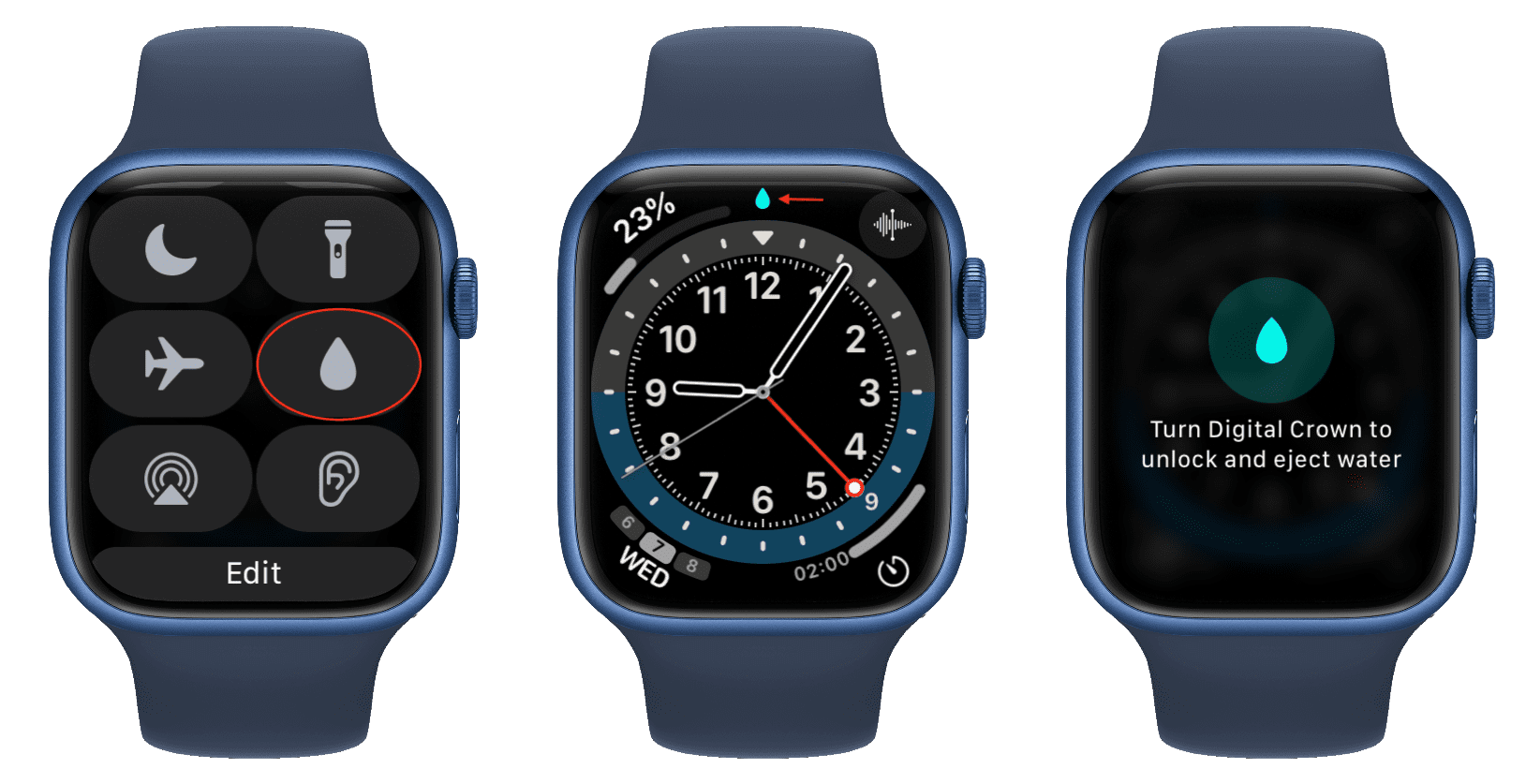
Must see: Check out the Apple Watch ejecting water in slow motion in new video
3. Turn off your Apple Watch temporarily
If something isn’t working as it should, go ahead and power down your Apple Watch. After doing this, wait for a while before turning it back on.
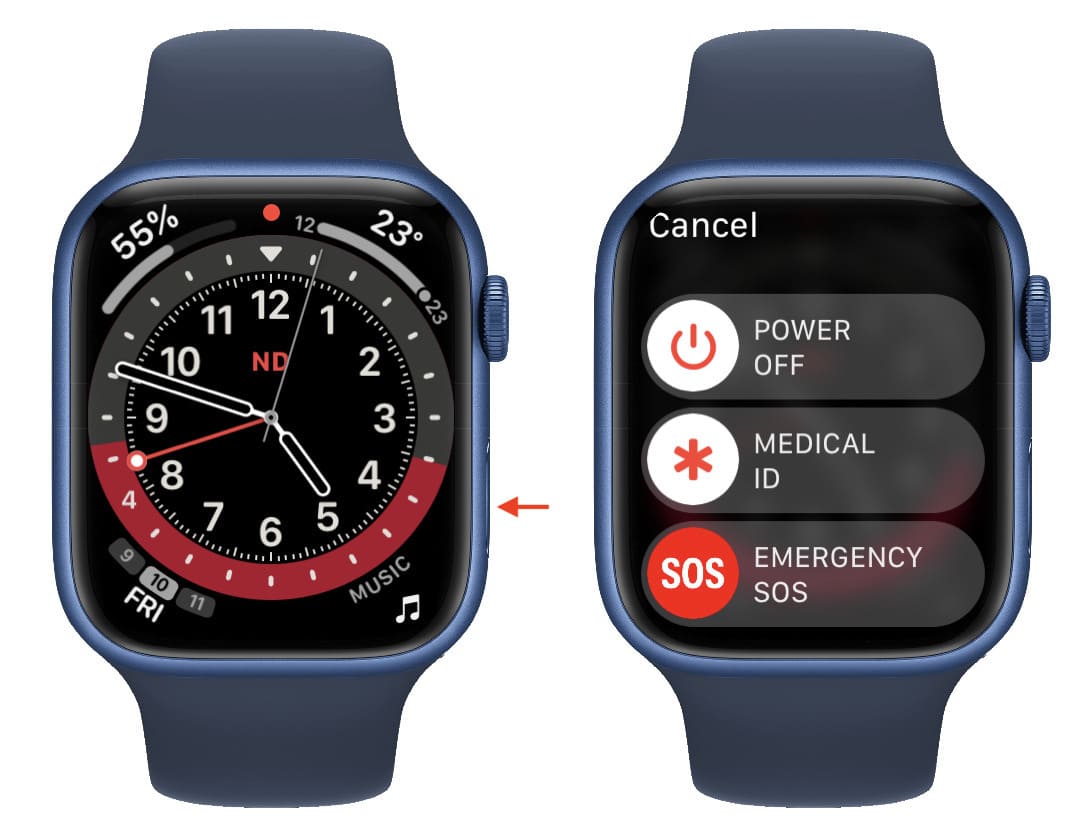
4. Don’t put a wet Apple Watch on its charger
Make sure you don’t place your wet Apple Watch on its charger. If you just finished a sweaty exercise and want to juice up your watch battery, take a few seconds to properly wipe the bottom portion where the charging connector is before putting the watch on the charging puck.
5. Remove the Apple Watch band
There is a hidden connector on Apple Watches (except Series 7 and later) behind the watch band, which is used by technicians to perform diagnostic tasks.
This connector is carefully sealed by a cap, but if you believe your Apple Watch was under water for a long time, you should remove the watch band and dry off the water that may be in that band slot. Doing so will prevent water from trying to go inside that special hidden connector.
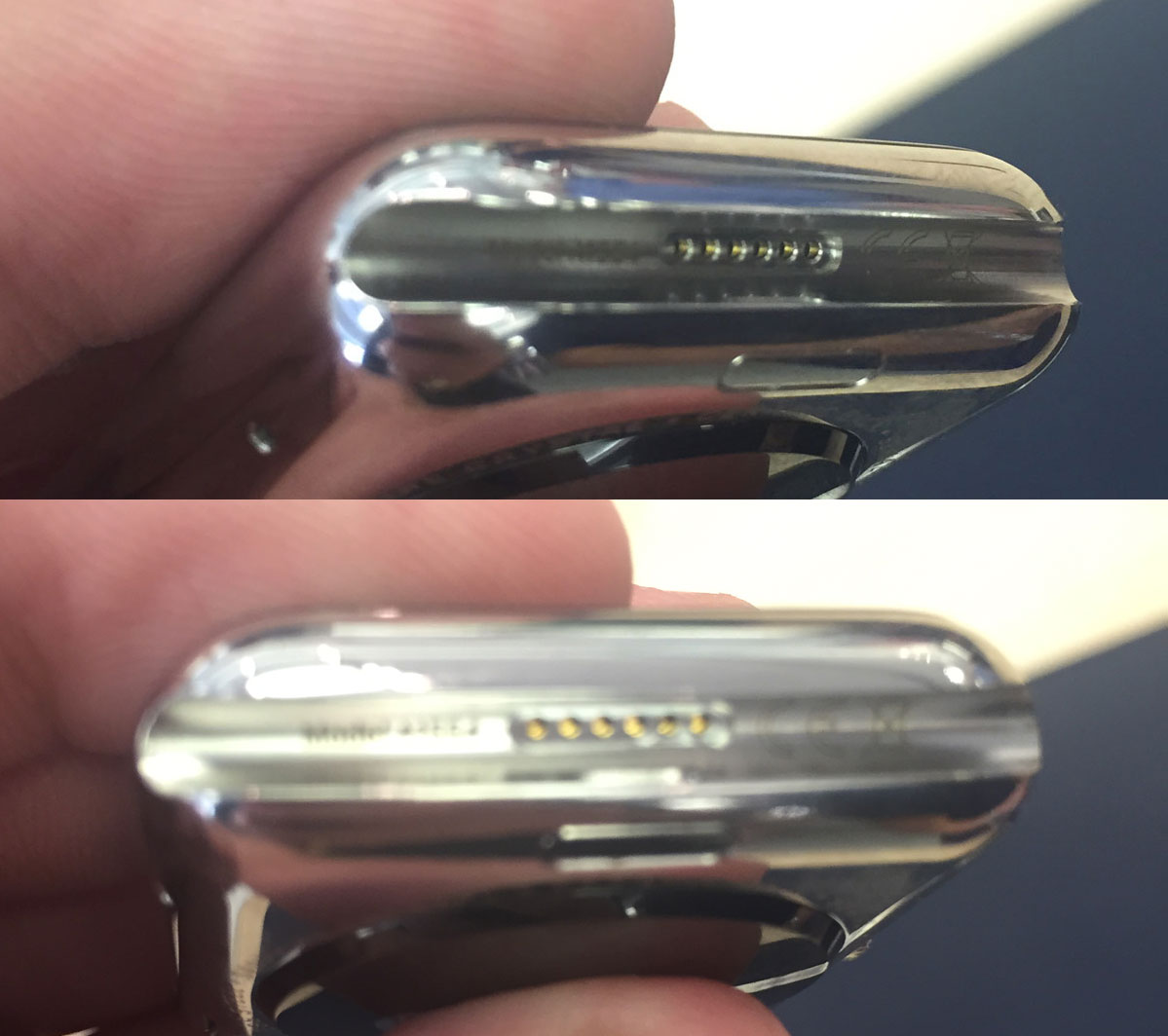
6. Your Apple Watch band may not be water-resistant
Even though your Apple Watch is splash and water-resistant, your band may not be.
The Sport band is water-resistant. But other bands like the leather band or Apple Watch bands you get from Amazon may not survive repeated water exposure.
Therefore, make sure you wipe away the water or sweat from your watch bands and let them dry.
Note: Many watch bands made of leather, fabric, etc., may develop a bad smell if you often get them wet and don’t dry them properly.
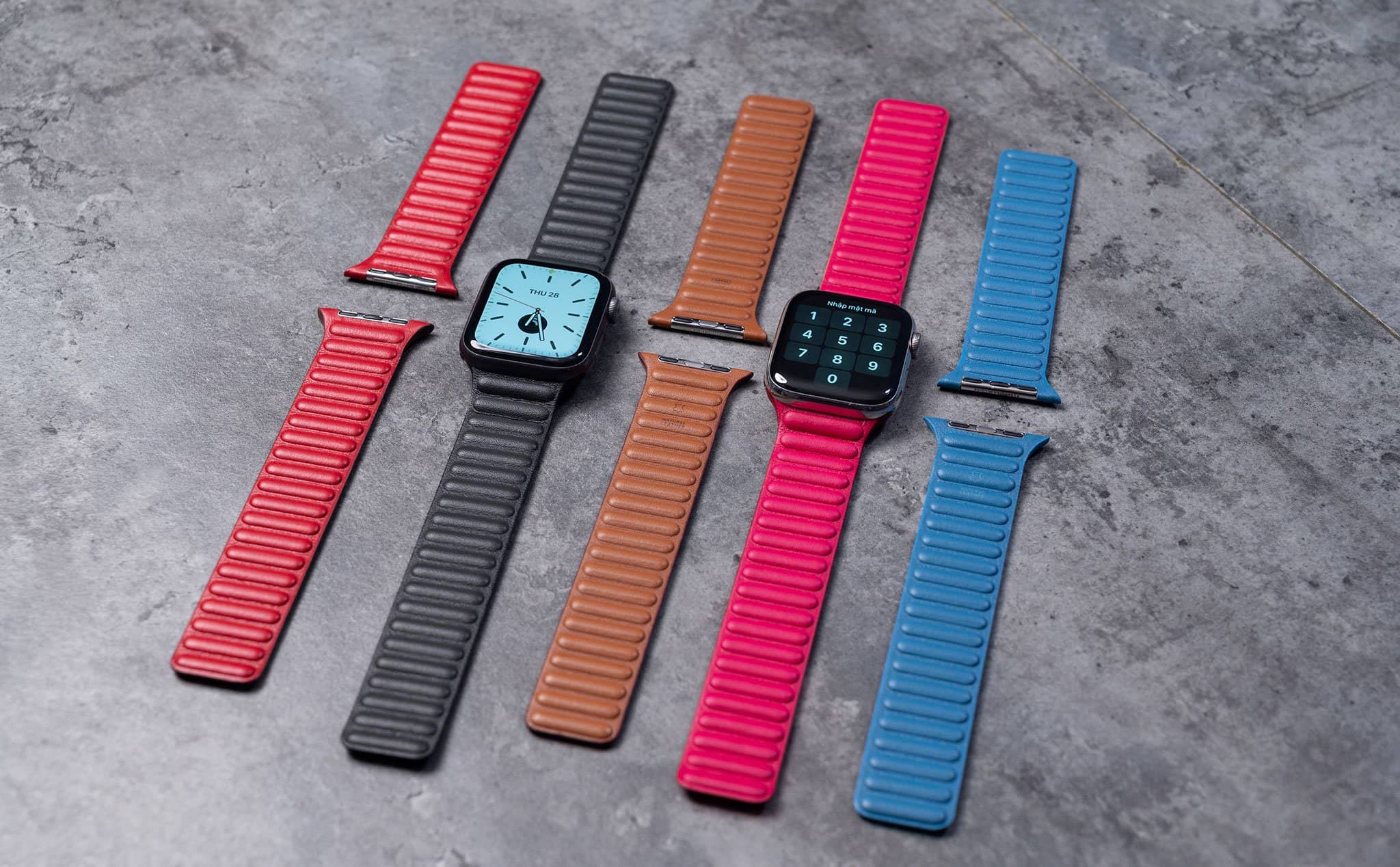
7. Are you using a case for your Apple Watch?
If you use a case or cover for your Apple Watch, consider removing it after getting your watch wet. Doing so will ensure the water that may have sneaked inside the case evaporates quickly without developing stains.
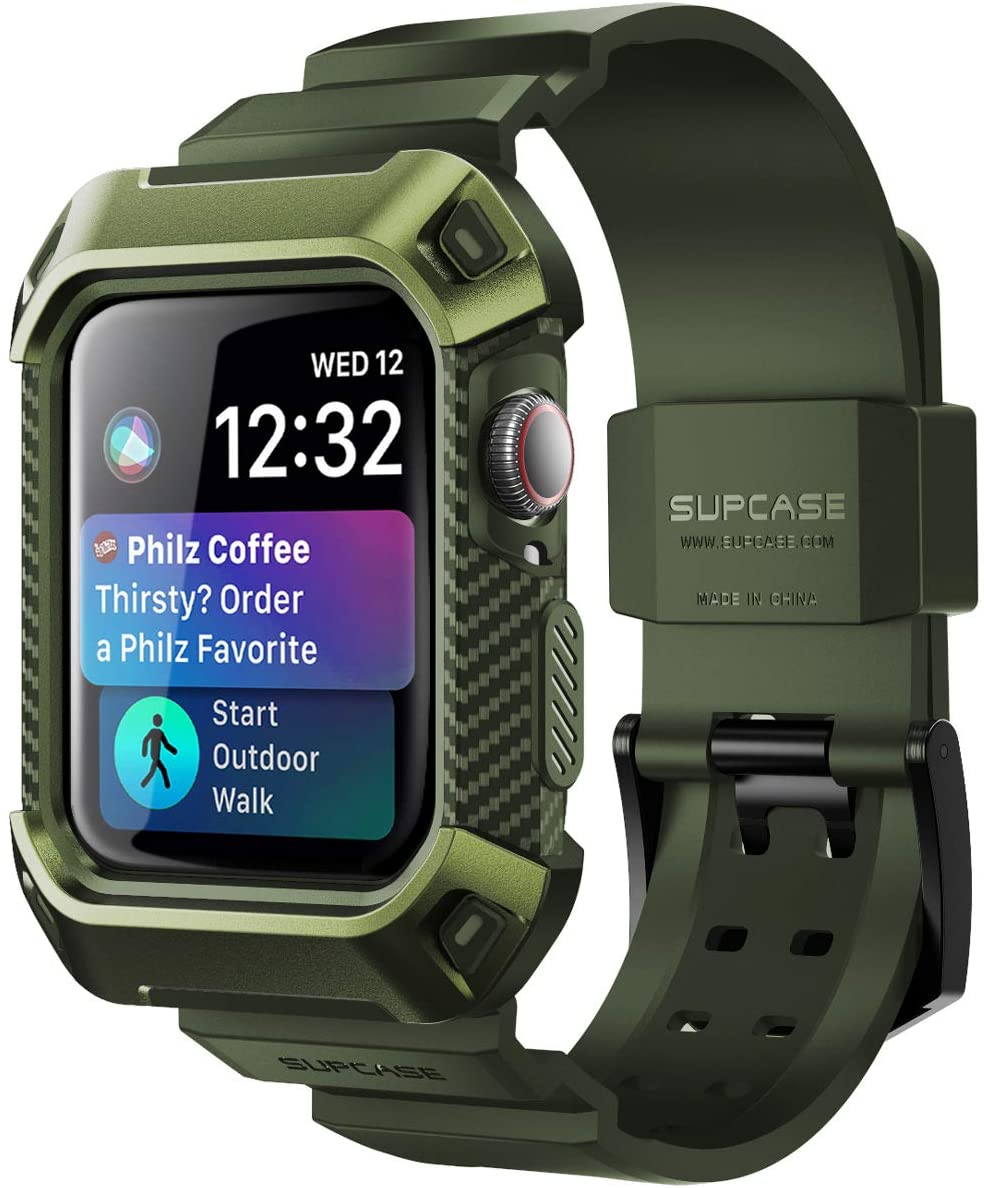
These are some things to do after getting your Apple Watch wet or once you finish swimming, showering, or engaging in water activities with your watch. If you have other tips, please share them with us.
On a related note: